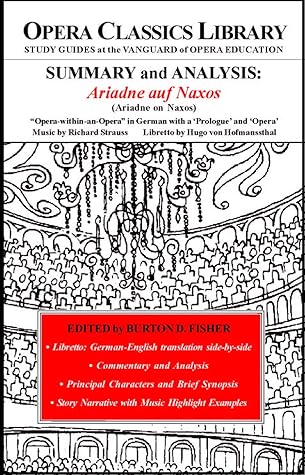Kindle Notes & Highlights
Read between
May 3 - May 17, 2023
The philosophical Die Frau ohne Schatten (1919) (The Woman without a Shadow) is a symbolic and deeply psychological fairy tale in which the spiritual and real worlds collide;
The Prologue’s music is not a recitative, but a richly-textured, expanding musical dialogue.
Strauss endowed the impetuous young Composer with music of intense emotive power.
he short Overture expresses Ariadne’s sorrow and despair. Many of its themes return in her monologue: the radiant music that announces her yearning for the messenger of death, which returns at the appearance of Bacchus, and then leads to the theme of love, ultimately dying away with subtle delicacy.
The dainty microcosm of the comedians is contrasted with the sublime pathos of the opera seria, the two worlds at times intermingling.
The showpiece of the opera is Zerbinetta’s daring coloratura aria, with successions of every kind of trill and ornamentation that seem to exceed the demands of classic Italian bel canto virtuosity; its vocal acrobatics are blended with wit and high spirits, and aptly express her capricious and charming personality.
with intermittent encouragement from the trio of Nymphs, Ariadne’s longing for death becomes transformed into a longing for love; she surrenders to the heaven-sent stranger and passion immediately envelops both.
The aching lyricism and lush expressivity of this opera seria apotheosis soar to a visceral intensity.


